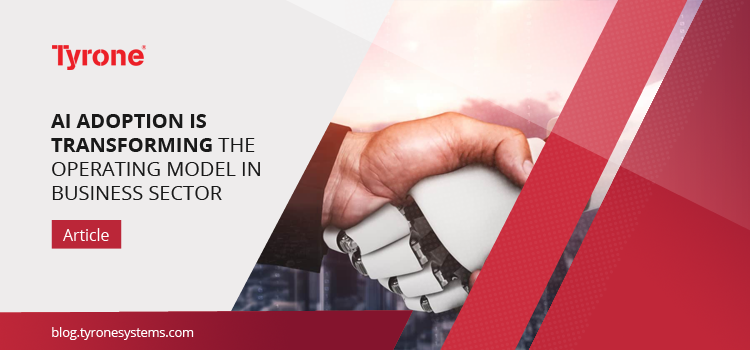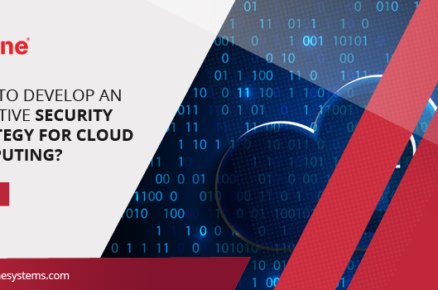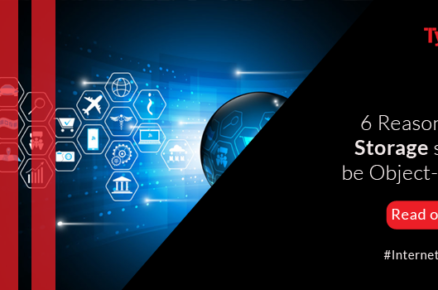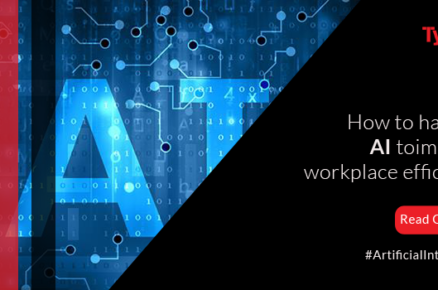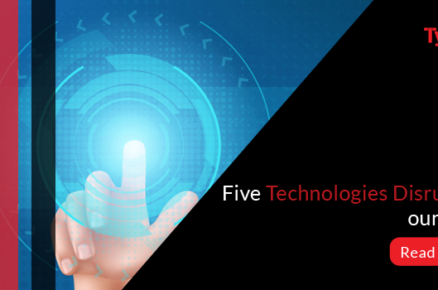Artificial Intelligence has been here since long now but has taken mainstage just recently. It is also a major growing force in every business sector there is. Recently, AI has bought about major paradigm shifts of many executives and business owners that are not just applicable to large conglomerates like Facebook, Apple, Amazon, Netflix and Google but also working smoothly and integrated in Small and Middle-sized Enterprises. It is serving every corner possible when it comes to showing its vast potential.
AI is taking centre stage across a wide variety of industries, including retail and manufacturing. New product and features are being embedded with virtual assistants, while chatbots are answering customer questions on everything from online office supplier’s site to web hosting service provider’s support page. Artificial Intelligence has created a lot of avenues and leveraged many services and technology features through its applications that are so widespread that they seem to fit in almost any sector of business functionality. Data is being harnessed, processed and analysed thoroughly and is making major contributions to decision making in big and small firms. AI has made widespread advancement through its applications such as machine learning, computer vision, deep learning and natural language processing (NLP).
From the revolution in personal computers to the digitisation of information technologies than ever before, AI has impacted every form of business.
Leaders should develop a clear sense of their strategic ambitions – where to play and how to win – and business models they wish to employ, including target customer segments, channels, pricing, and delivery models, since both strategy and business directly influence the operating model design. Organisations that try to cut short their way to a new operating model may find the design to be ineffective and the implementation lacking employee traction – or worse, dilutive to value.
What Work Needs To Be Done:
In moving forward with digital transformation, the first step is to identify the holistic set of capabilities required to meet the enterprise’s strategic ambitions. The capability set should include both existing capabilities and new ones and address front, mid, back-office functions across all product lines. For example, product strategy is a capability that creates product road maps to realise customer requirements, campaign management is a capability that launches, measures, and reports on the success of marketing. When brought together, capabilities comprise a capability map, representing the collective set required to execute against the strategy and business model.
Artificial Intelligence adoption is not an easy task on a single run. Therefore, encouraging employee’s involvement in the working system might reduce the challenges in accepting. Meanwhile, it could turn employees to transform to data scientists.
Artificial Intelligence’s prime role for business model is to analyze data and give a framework on solutions for problems, the roadmap to success and future predictions. Business users are the perfect resources in an organization to help find an issue that requires an AI solution. Artificial Intelligence functions on huge data sources and volumes of raw data called big data to assist in accelerating the inception phase of any AI project. The move will consequently boost the results. Big data is considered a very crucial asset to the organization as they are the basic raw materials where AI performs its skills.
Businesses across the world expect to face very different challenges and changes in the coming years in the field of business. It is strongly believed that automation driven growth or Artificial Intelligence and its capabilities will likely be the only constant in those changes. In simple terms in AI-driven automation, growth means more intelligence from data coming in from all sources and volumes from connected devices, social media, industry data, and more that furthers the potential to revolutionize business models. Over the years, digital data has been growing at a staggering pace across the world and it has its strong reasons. It is essential to understand :(i) how this new data-driven intelligence reality brings each business across countries an entirely new world full of opportunities and risks; and (ii) what the expected consequences for each market (existing and emerging) would be?
Businesses are at a nascent stage to understand the serious implications of the evolving AI-driven automation in businesses far beyond narrow artificial intelligence applications. While the strong relationship between data, information, and intelligence is complicated, and at times indirect, the force and pace of AI-driven automation changes expected in the coming years will present each business, different challenges and opportunities for its profitability. It will be fascinating to witness how the AI changes global business power dynamics.
The growing weaponization of AI has made security a critical issue across the world not only in the business world but also for defence and national security issues. AI is currently an area where almost no rules of engagement apply, and each country will face difficulties in creating security from algorithms and defining international law. While all algorithms have no defined borders and no global regulations as of now or even a regulatory body, data has its origin, ownership, and boundaries. There are many nations, states, freelancers, criminals, and terrorists – that consider algorithms outside the pale of global jurisdiction. While many agreements have emerged concerning cyber-crime, interpretation of AI warfare remains outside any binding legal obligations. In the absence of a consensus on AI norms, every business model and business is at risk.
Artificial intelligence is an integral part of the future that is coming to each business entity across nations. The emerging trends in AI-driven automation reflect significant shifts of players and actions in the AI sphere that speak to the reconfiguration of interests, influence, and investments in global business politics. While rapidly automating businesses present promising opportunities, they also present significant security risks. As the future of AI-driven business transformation is closely tied to how nations manage their significant data capabilities from across cyberspace, aquaspace, geospace, and space (CAGS), there is a need to place a strong emphasis on advancing data initiatives to gather more information to evolve the AI landscape further.
Our AI expertise helps organizations solve real business problems by uncovering data-driven decisions. Get in touch with us


